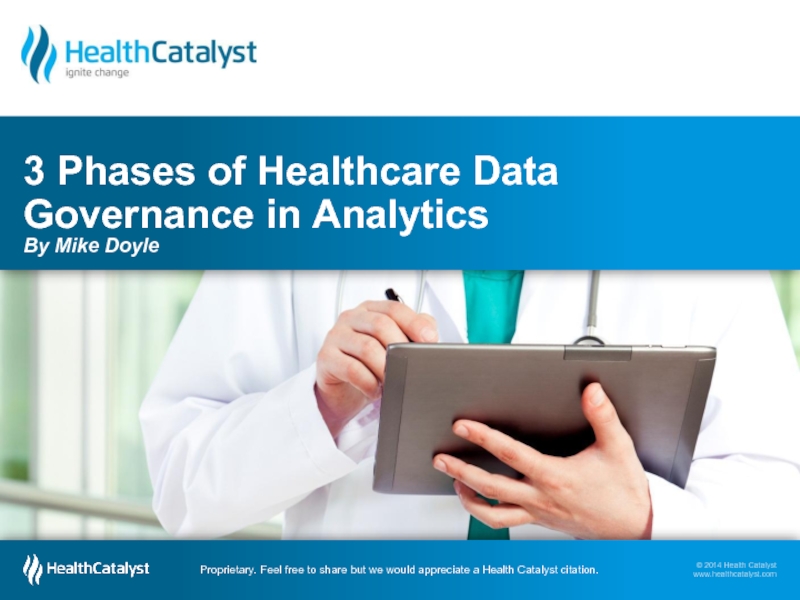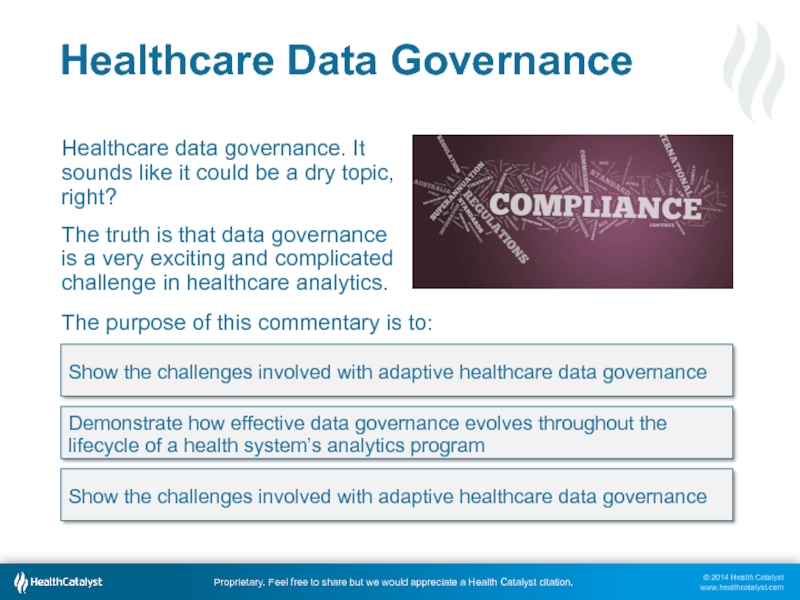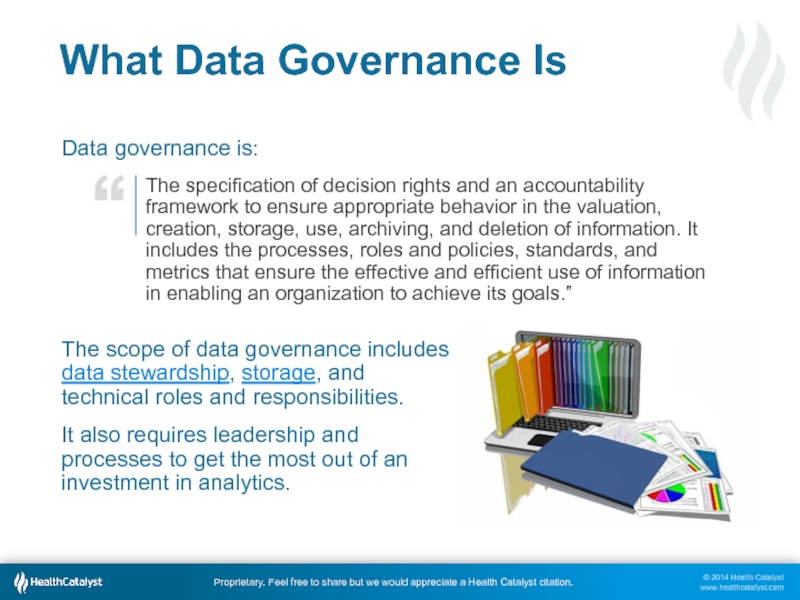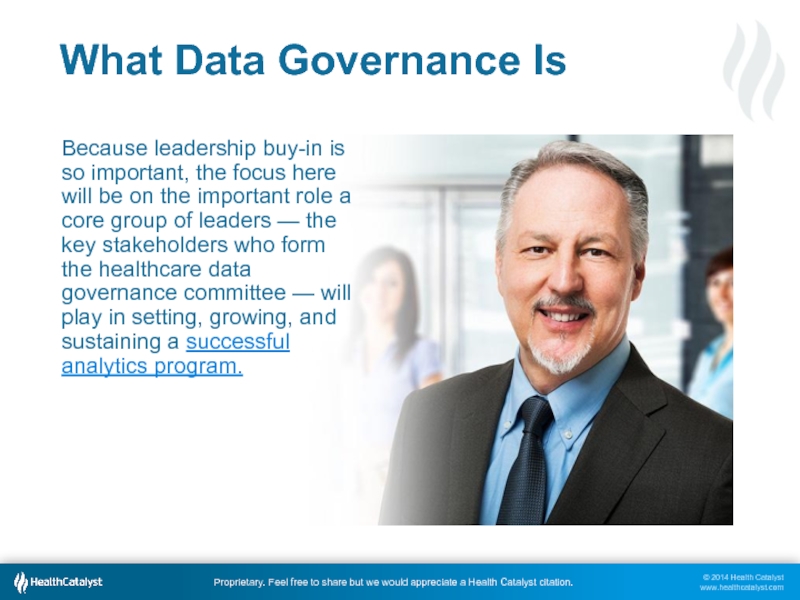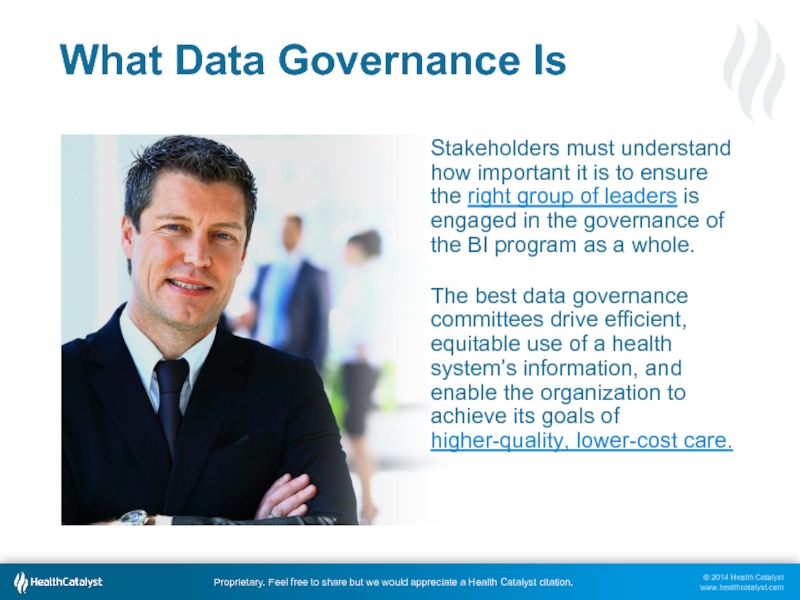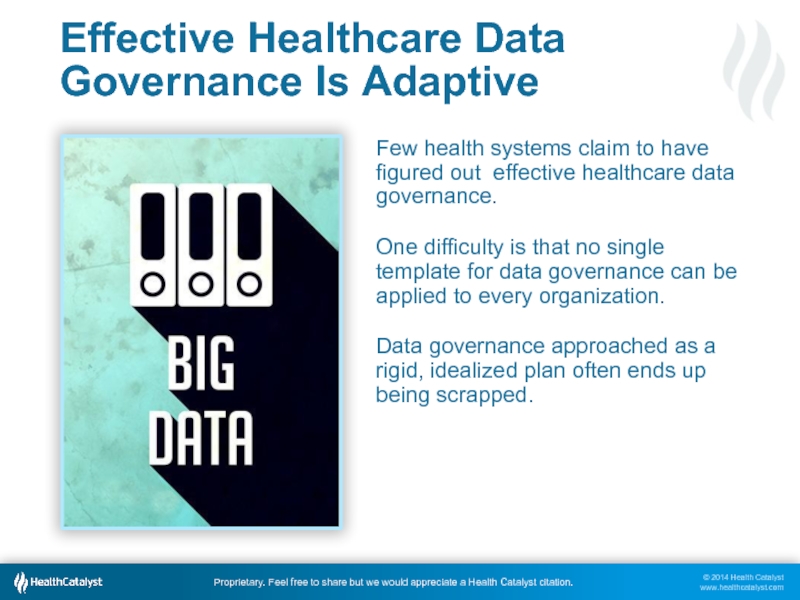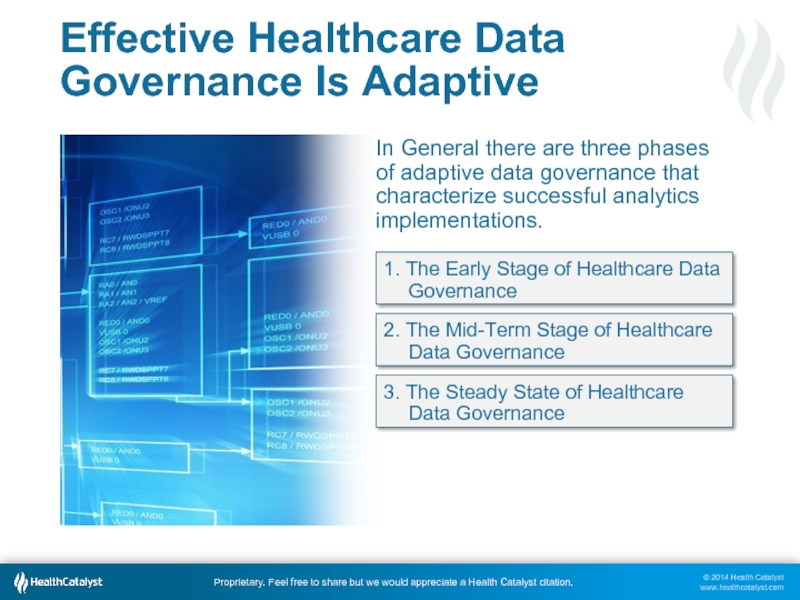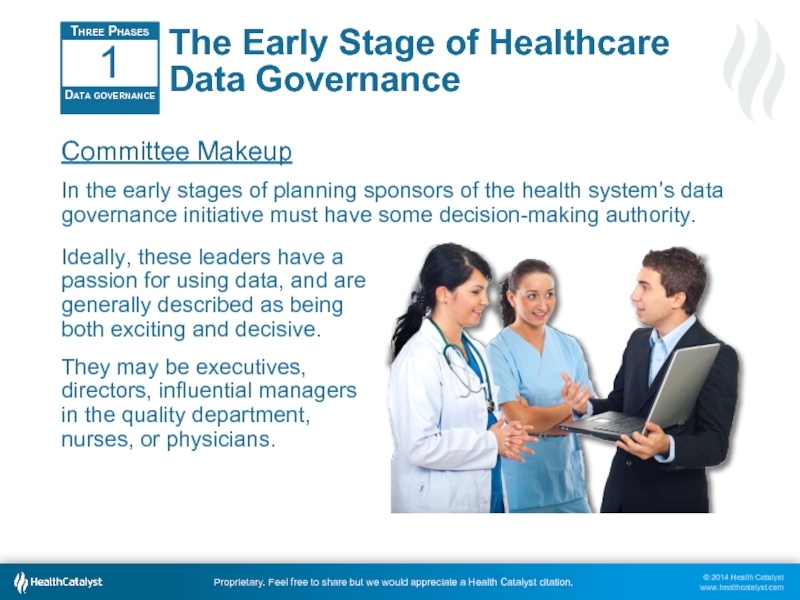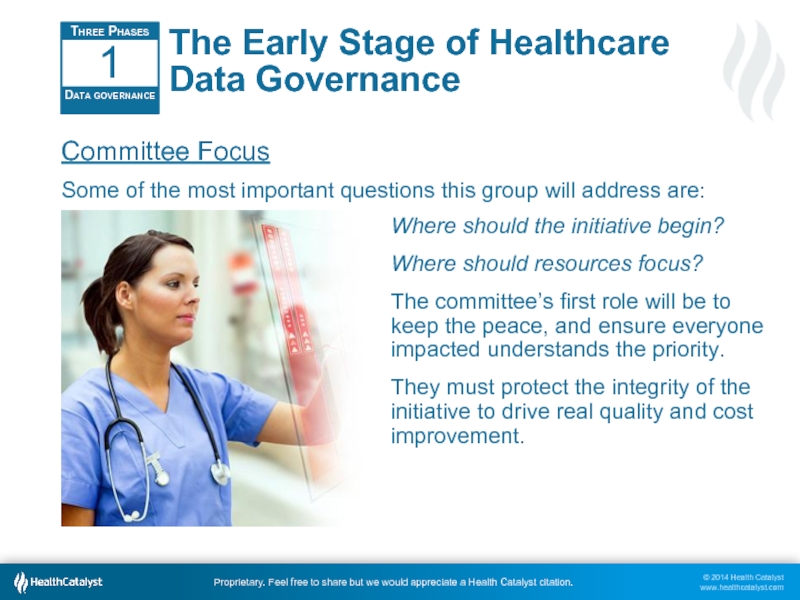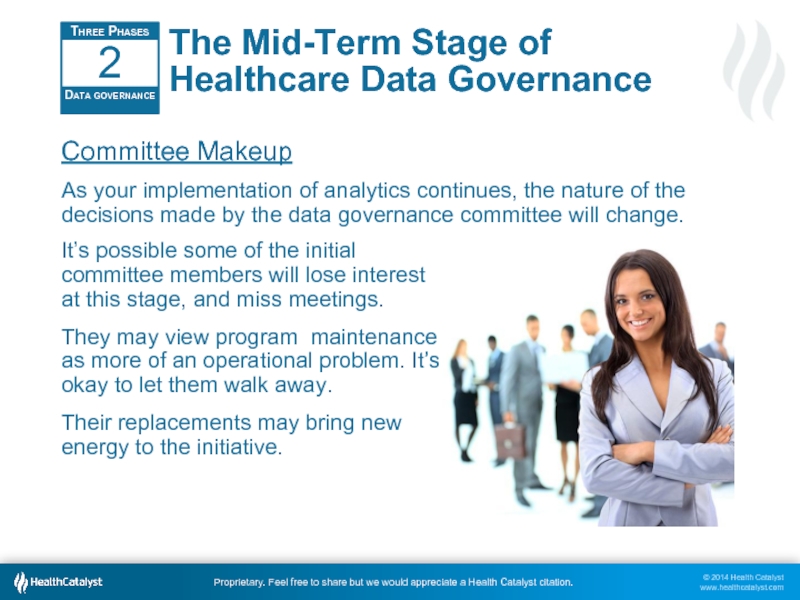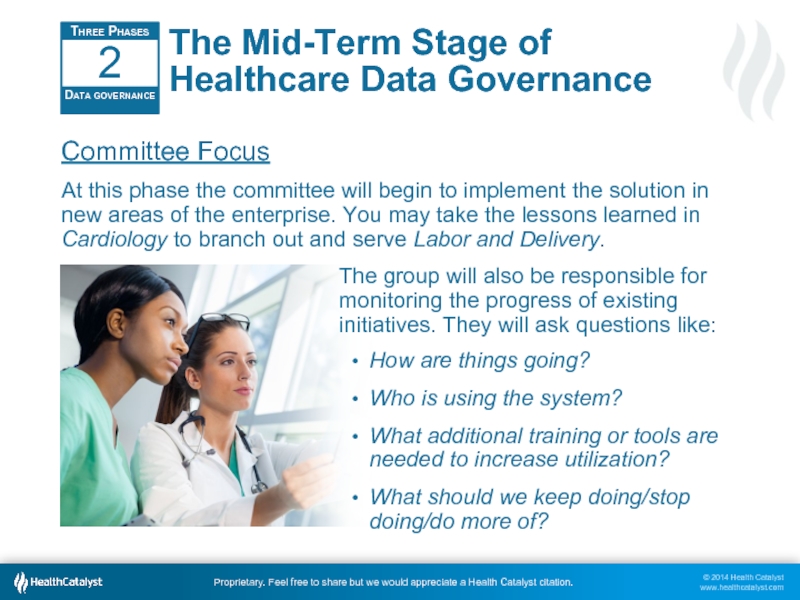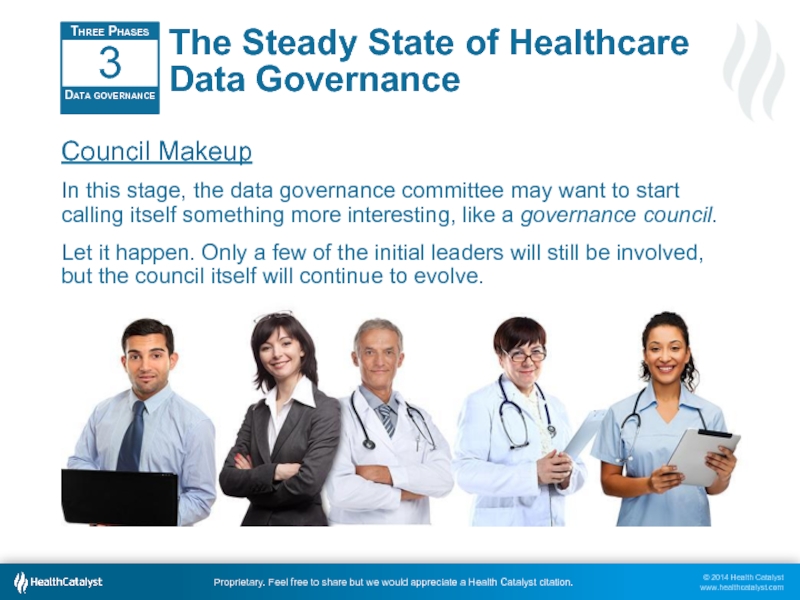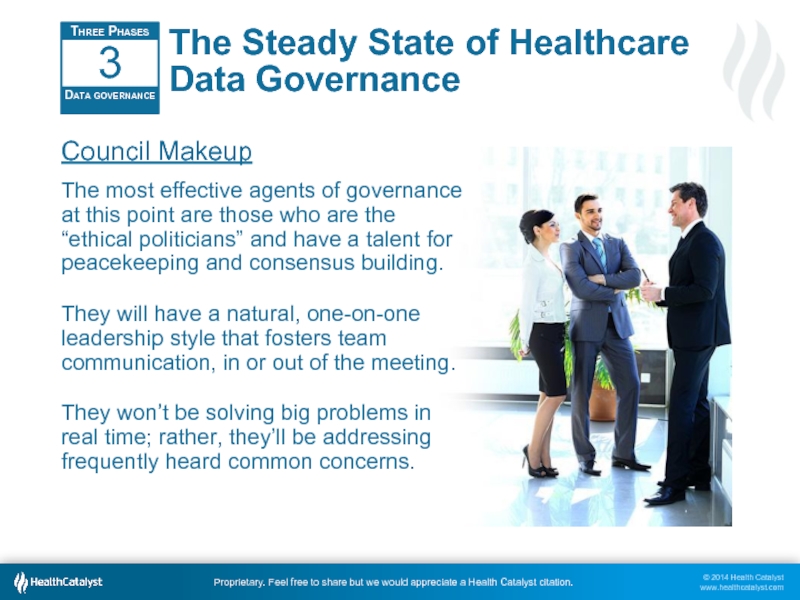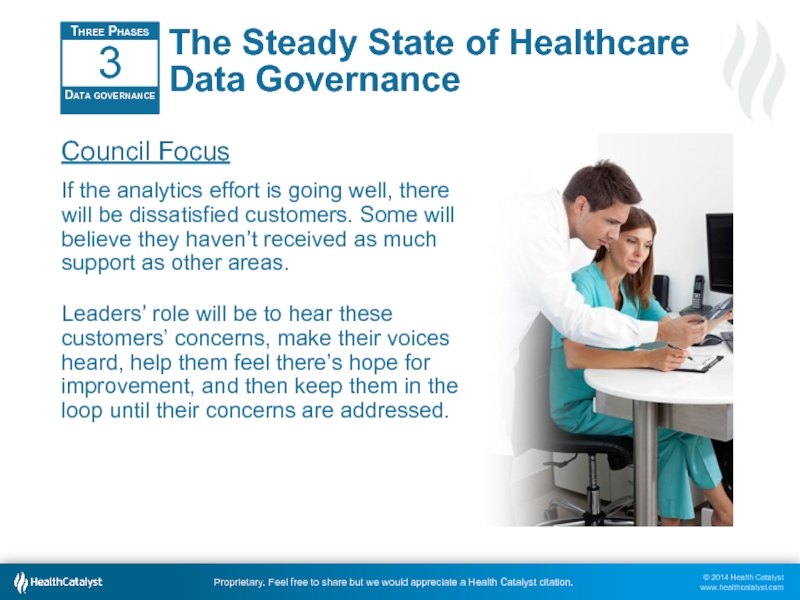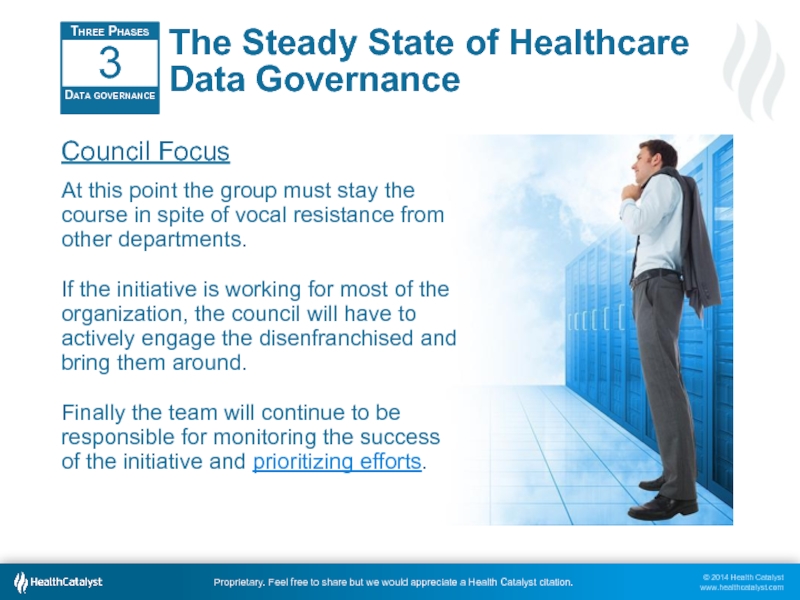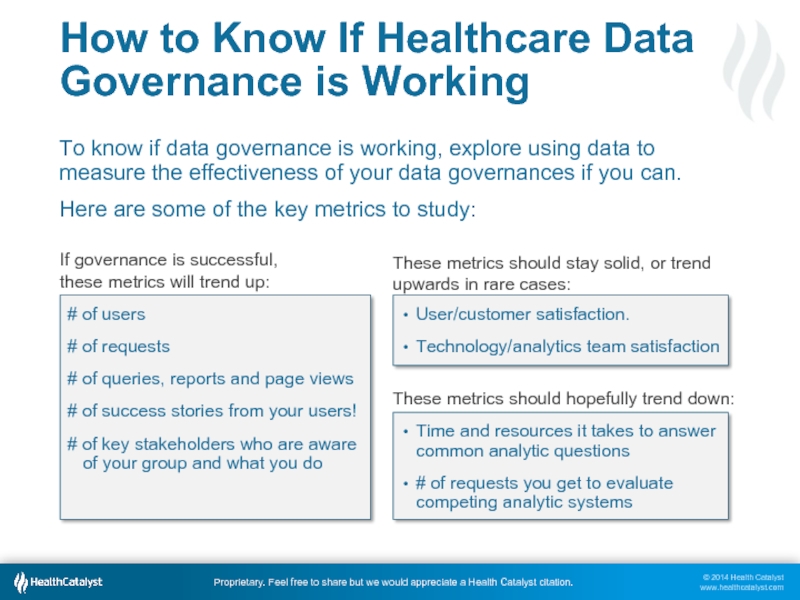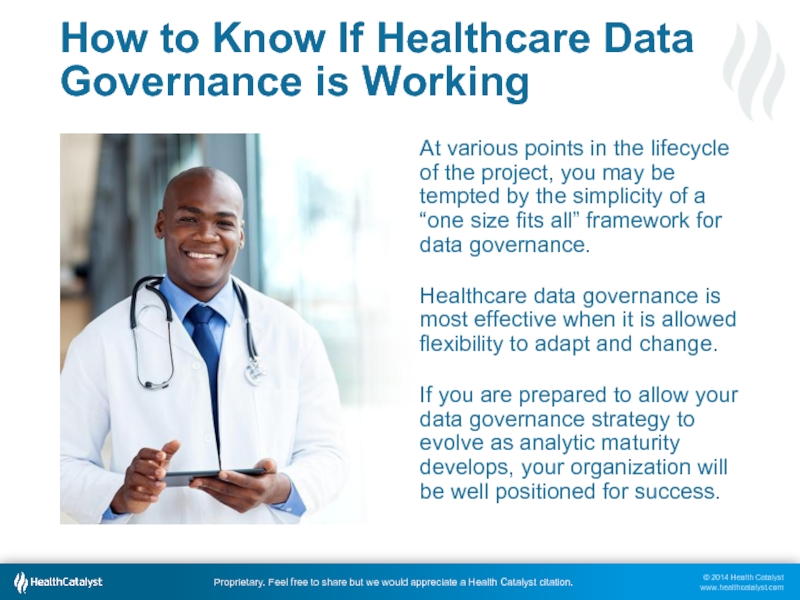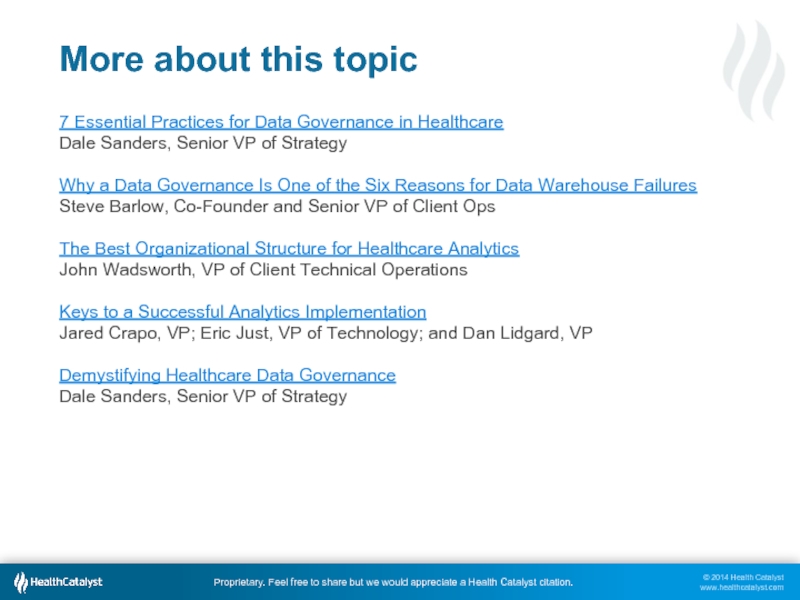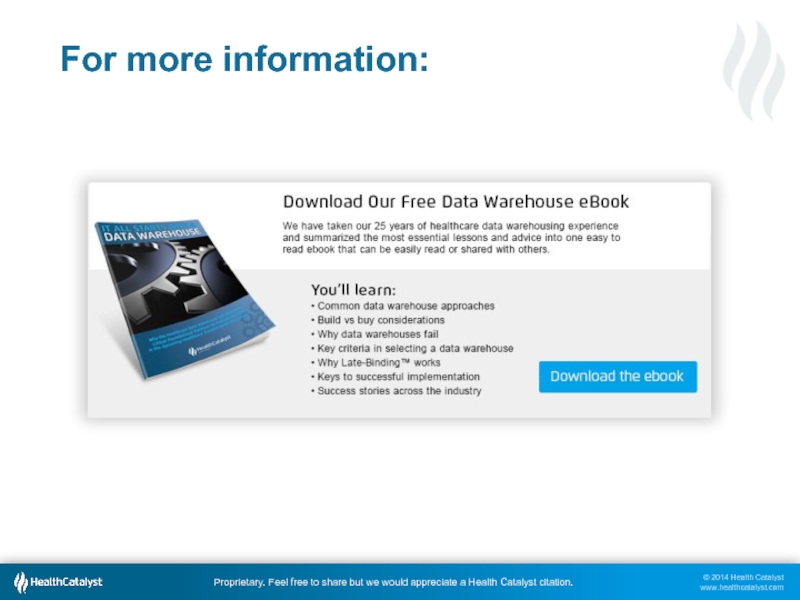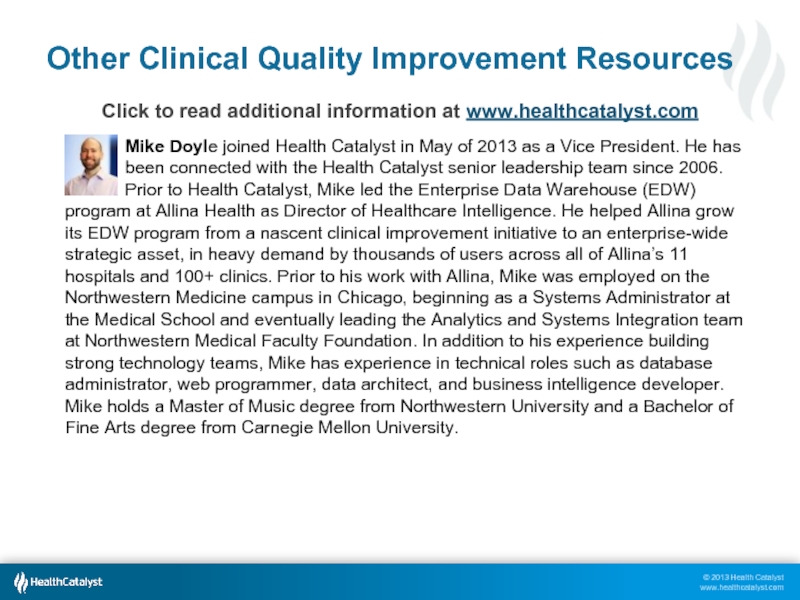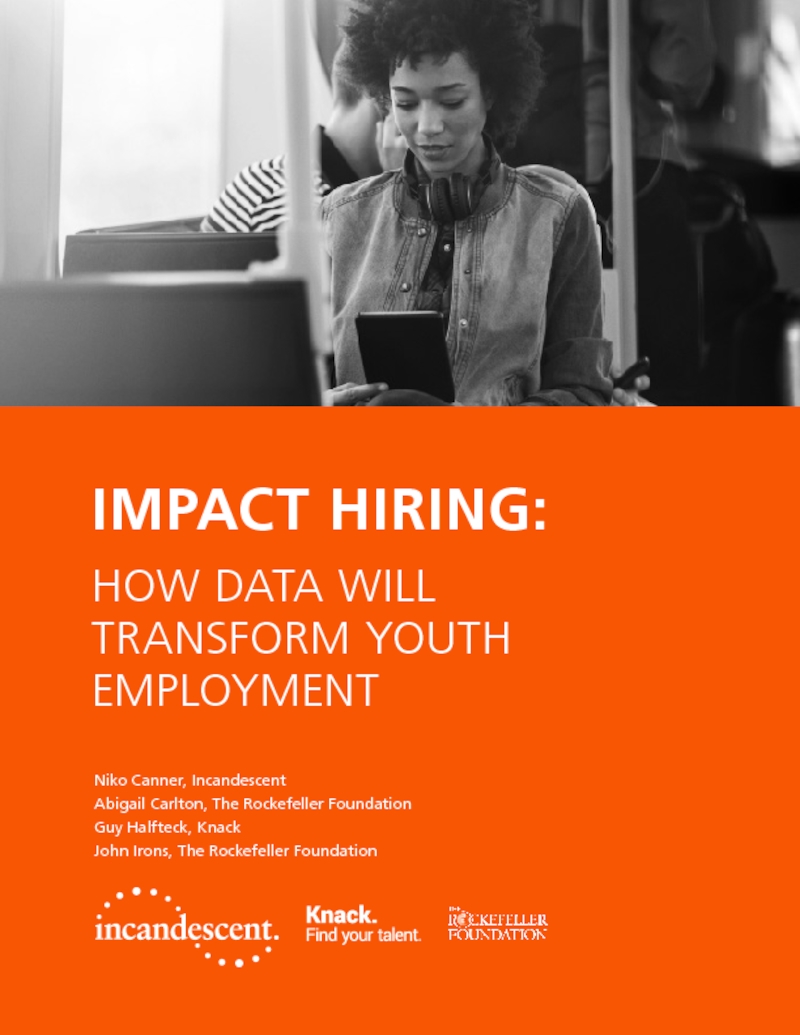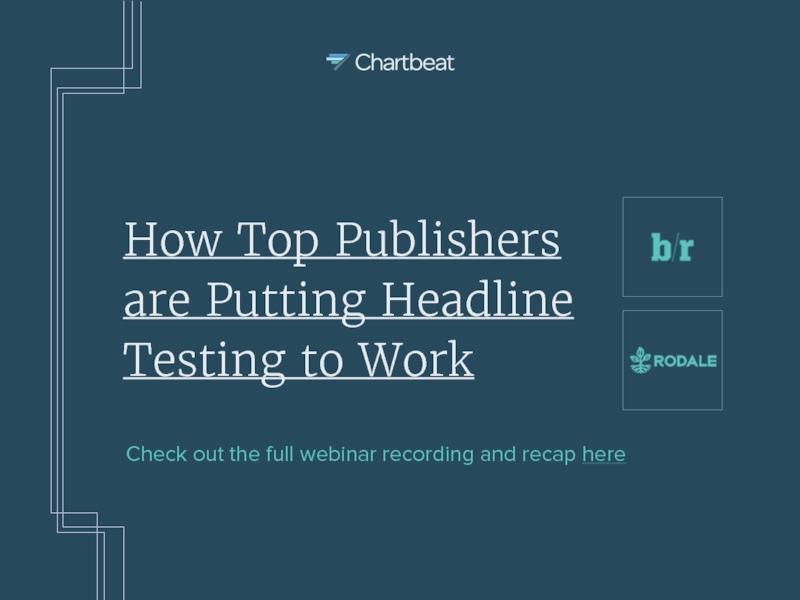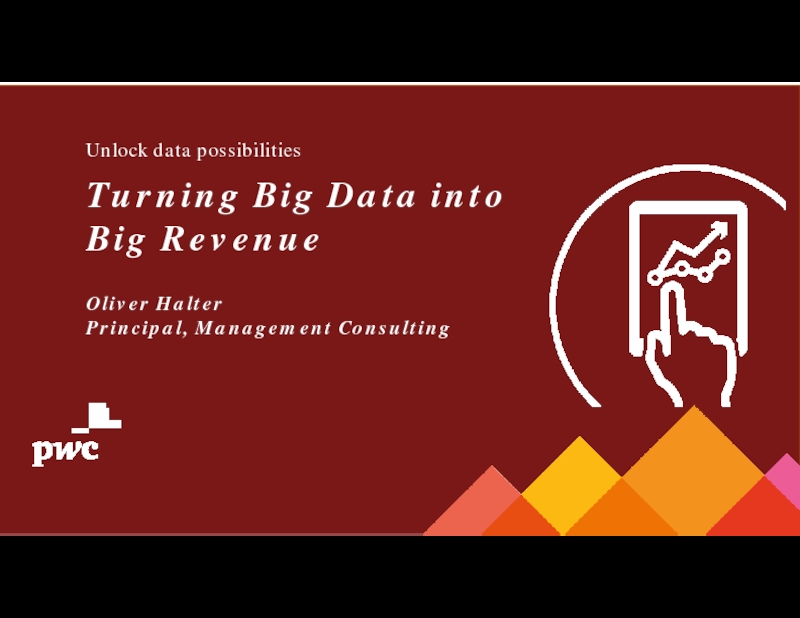- Главная
- Разное
- Дизайн
- Бизнес и предпринимательство
- Аналитика
- Образование
- Развлечения
- Красота и здоровье
- Финансы
- Государство
- Путешествия
- Спорт
- Недвижимость
- Армия
- Графика
- Культурология
- Еда и кулинария
- Лингвистика
- Английский язык
- Астрономия
- Алгебра
- Биология
- География
- Детские презентации
- Информатика
- История
- Литература
- Маркетинг
- Математика
- Медицина
- Менеджмент
- Музыка
- МХК
- Немецкий язык
- ОБЖ
- Обществознание
- Окружающий мир
- Педагогика
- Русский язык
- Технология
- Физика
- Философия
- Химия
- Шаблоны, картинки для презентаций
- Экология
- Экономика
- Юриспруденция
3 Phases of Healthcare Data Governance in AnalyticsBy Mike Doyle презентация
Содержание
- 1. 3 Phases of Healthcare Data Governance in AnalyticsBy Mike Doyle
- 2. Healthcare Data Governance Healthcare data governance. It
- 3. What Data Governance Is Data governance is:
- 4. What Data Governance Is Because leadership buy-in
- 5. What Data Governance Is Stakeholders must understand
- 6. Effective Healthcare Data Governance Is Adaptive Few
- 7. Effective Healthcare Data Governance Is Adaptive In
- 8. The Early Stage of Healthcare Data Governance
- 9. The Early Stage of Healthcare Data Governance
- 10. The Mid-Term Stage of Healthcare Data Governance
- 11. The Mid-Term Stage of Healthcare Data Governance
- 12. The Steady State of Healthcare Data Governance
- 13. The Steady State of Healthcare Data Governance
- 14. The Steady State of Healthcare Data Governance
- 15. The Steady State of Healthcare Data Governance
- 16. How to Know If Healthcare Data Governance
- 17. How to Know If Healthcare Data Governance
- 18. More about this topic 7 Essential Practices
- 19. For more information:
- 20. Other Clinical Quality Improvement Resources Click to
Слайд 2Healthcare Data Governance
Healthcare data governance. It sounds like it could be
The truth is that data governance is a very exciting and complicated challenge in healthcare analytics.
The purpose of this commentary is to:
Show the challenges involved with adaptive healthcare data governance
Demonstrate how effective data governance evolves throughout the lifecycle of a health system’s analytics program
Show the challenges involved with adaptive healthcare data governance
Слайд 3What Data Governance Is
Data governance is:
The scope of data governance
It also requires leadership and processes to get the most out of an investment in analytics.
Слайд 4What Data Governance Is
Because leadership buy-in is so important, the focus
Слайд 5What Data Governance Is
Stakeholders must understand how important it is to
The best data governance committees drive efficient, equitable use of a health system’s information, and enable the organization to achieve its goals of higher-quality, lower-cost care.
Слайд 6Effective Healthcare Data Governance Is Adaptive
Few health systems claim to have
One difficulty is that no single template for data governance can be applied to every organization.
Data governance approached as a rigid, idealized plan often ends up being scrapped.
Слайд 7Effective Healthcare Data Governance Is Adaptive
In General there are three phases
1. The Early Stage of Healthcare Data Governance
2. The Mid-Term Stage of Healthcare Data Governance
3. The Steady State of Healthcare Data Governance
Слайд 8The Early Stage of Healthcare Data Governance
Committee Makeup
In the early stages
Ideally, these leaders have a passion for using data, and are generally described as being both exciting and decisive.
They may be executives, directors, influential managers in the quality department, nurses, or physicians.
Слайд 9The Early Stage of Healthcare Data Governance
Committee Focus
Some of the most
Where should the initiative begin?
Where should resources focus?
The committee’s first role will be to keep the peace, and ensure everyone impacted understands the priority.
They must protect the integrity of the initiative to drive real quality and cost improvement.
Слайд 10The Mid-Term Stage of Healthcare Data Governance
Committee Makeup
As your implementation of
It’s possible some of the initial committee members will lose interest at this stage, and miss meetings.
They may view program maintenance as more of an operational problem. It’s okay to let them walk away.
Their replacements may bring new energy to the initiative.
Слайд 11The Mid-Term Stage of Healthcare Data Governance
Committee Focus
At this phase the
The group will also be responsible for monitoring the progress of existing initiatives. They will ask questions like:
How are things going?
Who is using the system?
What additional training or tools are needed to increase utilization?
What should we keep doing/stop doing/do more of?
Слайд 12The Steady State of Healthcare Data Governance
Council Makeup
In this stage, the
Let it happen. Only a few of the initial leaders will still be involved, but the council itself will continue to evolve.
Слайд 13The Steady State of Healthcare Data Governance
Council Makeup
The most effective agents
They will have a natural, one-on-one leadership style that fosters team communication, in or out of the meeting.
They won’t be solving big problems in real time; rather, they’ll be addressing frequently heard common concerns.
Слайд 14The Steady State of Healthcare Data Governance
Council Focus
If the analytics effort
Leaders’ role will be to hear these customers’ concerns, make their voices heard, help them feel there’s hope for improvement, and then keep them in the loop until their concerns are addressed.
Слайд 15The Steady State of Healthcare Data Governance
Council Focus
At this point the
If the initiative is working for most of the organization, the council will have to actively engage the disenfranchised and bring them around.
Finally the team will continue to be responsible for monitoring the success of the initiative and prioritizing efforts.
Слайд 16How to Know If Healthcare Data Governance is Working
To know if
Here are some of the key metrics to study:
# of users
# of requests
# of queries, reports and page views
# of success stories from your users!
# of key stakeholders who are aware of your group and what you do
If governance is successful, these metrics will trend up:
User/customer satisfaction.
Technology/analytics team satisfaction
Time and resources it takes to answer common analytic questions
# of requests you get to evaluate competing analytic systems
These metrics should hopefully trend down:
These metrics should stay solid, or trend upwards in rare cases:
Слайд 17How to Know If Healthcare Data Governance is Working
At various points
Healthcare data governance is most effective when it is allowed flexibility to adapt and change.
If you are prepared to allow your data governance strategy to evolve as analytic maturity develops, your organization will be well positioned for success.
Слайд 18More about this topic
7 Essential Practices for Data Governance in Healthcare
Why a Data Governance Is One of the Six Reasons for Data Warehouse Failures Steve Barlow, Co-Founder and Senior VP of Client Ops
The Best Organizational Structure for Healthcare Analytics John Wadsworth, VP of Client Technical Operations
Keys to a Successful Analytics Implementation Jared Crapo, VP; Eric Just, VP of Technology; and Dan Lidgard, VP
Demystifying Healthcare Data Governance Dale Sanders, Senior VP of Strategy
Слайд 20Other Clinical Quality Improvement Resources
Click to read additional information at www.healthcatalyst.com
Mike Doyle joined Health Catalyst in May of 2013 as a Vice President. He has been connected with the Health Catalyst senior leadership team since 2006. Prior to Health Catalyst, Mike led the Enterprise Data Warehouse (EDW)
program at Allina Health as Director of Healthcare Intelligence. He helped Allina grow its EDW program from a nascent clinical improvement initiative to an enterprise-wide strategic asset, in heavy demand by thousands of users across all of Allina’s 11 hospitals and 100+ clinics. Prior to his work with Allina, Mike was employed on the Northwestern Medicine campus in Chicago, beginning as a Systems Administrator at the Medical School and eventually leading the Analytics and Systems Integration team at Northwestern Medical Faculty Foundation. In addition to his experience building strong technology teams, Mike has experience in technical roles such as database administrator, web programmer, data architect, and business intelligence developer. Mike holds a Master of Music degree from Northwestern University and a Bachelor of Fine Arts degree from Carnegie Mellon University.
